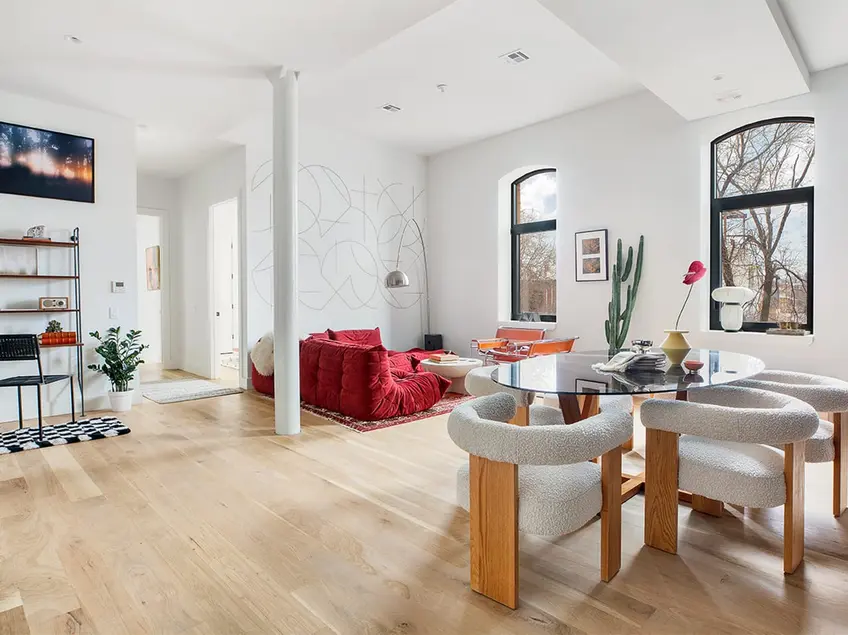
As certain New York City neighborhoods attract more attention, more housing is therefore required. However, that is not to say that all of its architectural treasures need to be razed to make way for multi-family housing — sometimes the solution is already there in the form of existing industrial buildings that can be converted to residential use. These may, in fact, prove more popular. Deborah Rieders of Corcoran, which is handling sales for Salvation Lofts in Clinton Hill, said, “There is real desire in this neighborhood for historic buildings, they are few and far between.”
Indeed, not long after sales launched at Salvation Lofts, locals following the conversion of 10 Quincy Street were already putting in offers; contracts for these have already gone out. Current availabilities start at $899K for one-bedrooms, $1.4 million for two-bedrooms, and $2.35 million for a three-bedroom with private parking and a private terrace. As per the building’s offering plan, 44 of the 46 units are set to be priced under $2 million.
In this article:
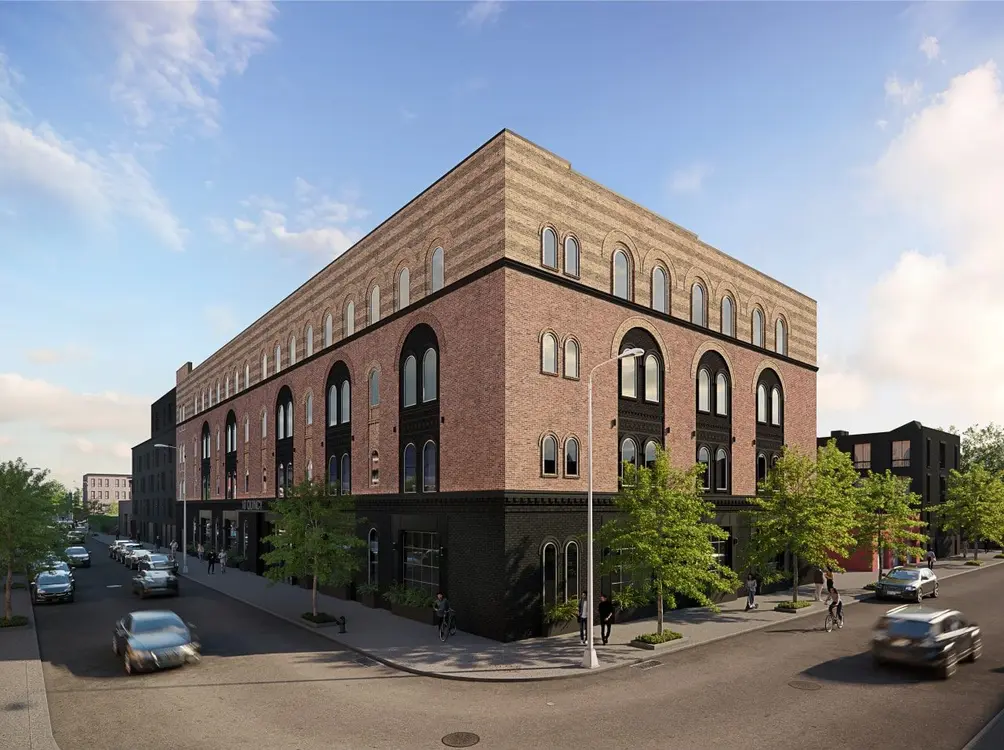 Salvation Lofts (Corcoran)
Salvation Lofts (Corcoran)
Salvation Lofts was named in honor of the Salvation Army, which acquired 10 Quincy Street from department store Frederick Loeser & Company in 1941. It was used as a distribution center and retail store for decades, and the Salvation Army sold the building to the developers for $28.5 million in January 2020. (How many holiday season bell-ringers would it take to raise that kind of money?)
“The focus was to blend in with the neighborhood — it’s not as boxy, glassy, flashy as some of the newer developments out there, although you will see we did not spare any dollars on finishes” — Moishe Loketch, Loketch Group
10 Quincy Street was designed in 1899 by Francis Kimball, whose architecture credits include the Corbin Building in the Financial District, the Emmanuel Baptist Church in Clinton Hill, and the dearly departed Casino Theatre in Midtown. Over 100 years later, Brownstoner noted that the developers were able to transfer some of its air rights to the neighboring rental at 26 Quincy Street, which may have saved it from demolition. That was sadly not the case at the onetime Broken Angel across the street, which was torn down to make way for 4 Downing Street, a tasteful if charmless condominium.
Salvation Lofts’ Romanesque Revival-style brick facade was thoughtfully restored from the ground up during the conversion, and the building was updated with new soundproof windows. The core of the building was removed to create a center courtyard and bring more light into the building.
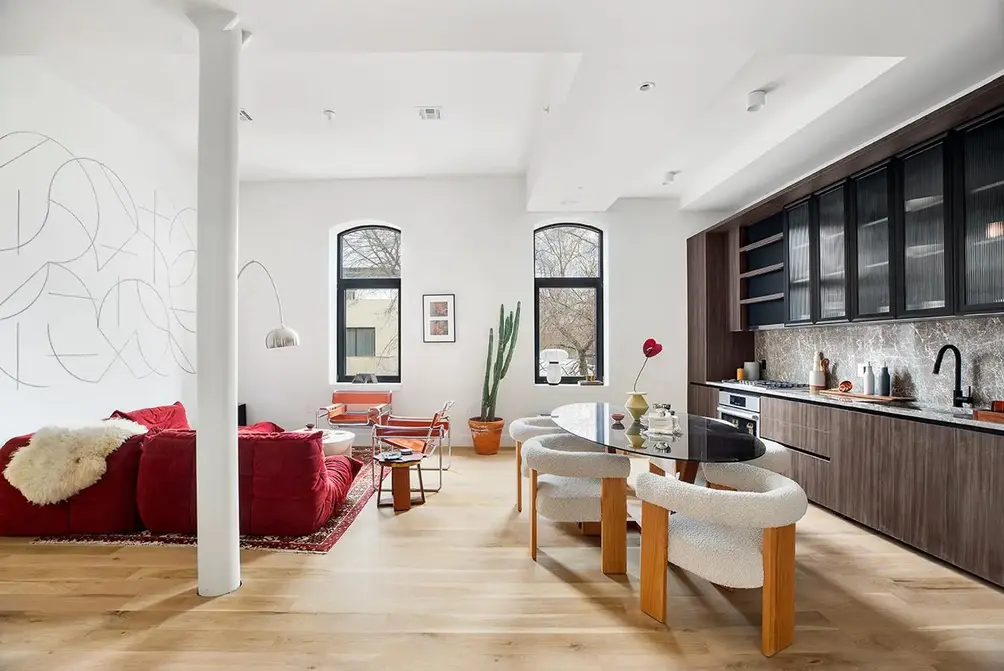 Salvation Lofts combines original architectural details with modern finishes (Corcoran)
Salvation Lofts combines original architectural details with modern finishes (Corcoran)


All apartments at Salvation Lofts feature:
- Ceiling heights from 11 to 14 feet high
- Wide oak floors
- Original columns
- Kitchens with Grigio Anthracite cabinetry, Tundra Gray honed quartz countertops, and custom-paneled professional appliances
- Baths with organic stone floors and wall tiles, blackened steel hardware, and custom vanities
- Multi-zone heating and cooling
- In-unit washer/dryer
- Private terraces overlooking the building’s center courtyard in select units


In addition to the newly created, lushly landscaped courtyard, amenities at Salvation Lofts include:
- Part-time doorman and virtual doorman service
- Lounge with kitchenette, seating area, and courtyard views
- Fitness center
- Rooftop deck with outdoor kitchen and Manhattan views
- Storage space for each unit
- Rooftop cabanas available for purchase
Comedy and music fans will recognize Salvation Lofts’ block from Dave Chappelle’s Block Party; director Michael Gondry suggested Brooklyn as a more intimate alternative to Central Park. Offscreen, it is close to Pratt Institute, Fort Greene Park, and popular restaurants in Clinton Hill and Bedford-Stuyvesant alike. It is situated between the Classon Avenue G and the Franklin Avenue A/C trains.
Would you like to tour any of these properties?
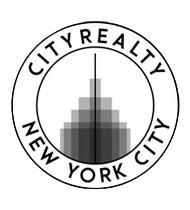
Content Specialist
Michelle Mazzarella
Michelle is a contributing writer and editor for real estate news in New York City

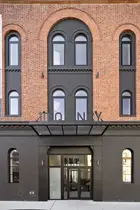
 6sqft delivers the latest on real estate, architecture, and design, straight from New York City.
6sqft delivers the latest on real estate, architecture, and design, straight from New York City.
